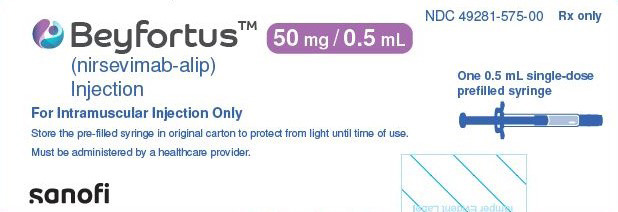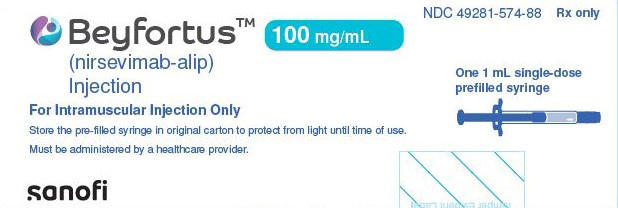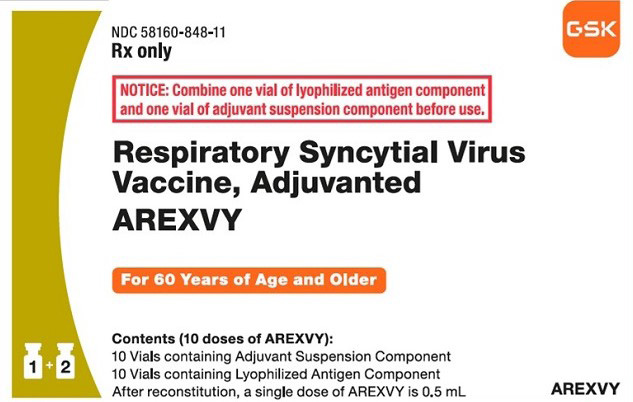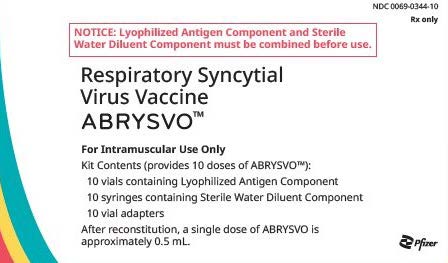Don't confuse products used to prevent infections from respiratory syncytial virus
Problem: Most patients who develop a respiratory tract infection from the respiratory syncytial virus (RSV) will have mild illness and recover in a week or two. However, RSV can be dangerous for infants and young children, and for certain adults (e.g., older immunocompromised adults) (www.ismp.org/ext/1282). With all the publicity about new RSV products, and RSV outbreaks in many areas, it is easy to confuse product names, dosages, and schedule differences between the two monoclonal products or confuse the two RSV vaccines. So, be prepared! Beyfortus and Synagis are indicated for use in certain infants and children, while the Arexvy and Abrysvo vaccines are indicated for use in certain adults.
Pediatric RSV Products
In July 2023, the US Food and Drug Administration (FDA) approved the monoclonal antibody BEYFORTUS (nirsevimab-alip), to prevent RSV in neonates and infants, and in certain children up to 24 months of age. Beyfortus is available in 50 mg/0.5 mL and 100 mg/mL single-dose prefilled syringes for intramuscular (IM) administration (Figure 1). See the prescribing information (www.ismp.org/ext/1235) for the recommended dose based on age, weight, RSV season, and for children who undergo cardiopulmonary bypass surgery. In October 2023, the Centers for Disease Control and Prevention (CDC) distributed an advisory from their Health Alert Network, Limited Availability of Nirsevimab in the United States—Interim CDC Recommendations to Protect Infants from Respiratory Syncytial Virus (RSV) during the 2023–2024 Respiratory Virus Season (www.ismp.org/ext/1276) with interim recommendations for those who should receive the vaccine. However, it is important to continually check the CDC website for the most up-to-date recommendations as to which patient population meets the current criteria for receiving immunization against RSV.


Practitioners may already be familiar with SYNAGIS (palivizumab), which was approved in 1998. Like Beyfortus, Synagis is a monoclonal antibody but is only recommended for children less than 24 months with certain conditions that place them at increased risk for severe RSV disease (www.ismp.org/ext/1264). Synagis is available in 50 mg/0.5 mL and 100 mg/mL single-dose vials for IM use. The dose of Synagis is 15 mg/kg IM, given once a month throughout the RSV season, which typically lasts for about 5 months, meaning 5 doses are needed.
Adult RSV Products
In 2023, the FDA approved two vaccines for RSV prevention in adults. AREXVY (respiratory syncytial virus vaccine, adjuvanted) (Figure 2) is indicated for active immunization of adults 60 years and older. ABRYSVO (respiratory syncytial virus vaccine) (Figure 3) is for active immunization of pregnant individuals at 32 through 36 weeks gestational age, as well as individuals 60 years of age and older. Both Arexvy and Abrysvo need to be reconstituted and are administered IM as a single dose, currently without recommendations for revaccination with additional doses.


Safe Practice Recommendations: Based on your patient population, determine which products should be available in your organization. Create order sets to guide practitioners in selecting the appropriate product and dosage based on the indication and the patient’s age and/or weight. Patients may also receive other vaccines (e.g., influenza, coronavirus disease 2019 [COVID-19]) at the same time as Arexvy or Abrysvo, so clearly label prepared vaccine syringes (e.g., vaccine name, dose). Ensure barcode scanning is used prior to dispensing and at the time of administration. Educate staff about the differences in indication, preparation, and dosage. Confirm with the patient the product(s) they are expecting to receive.
Access this Free Resource
You must be logged in to view and download this document.
